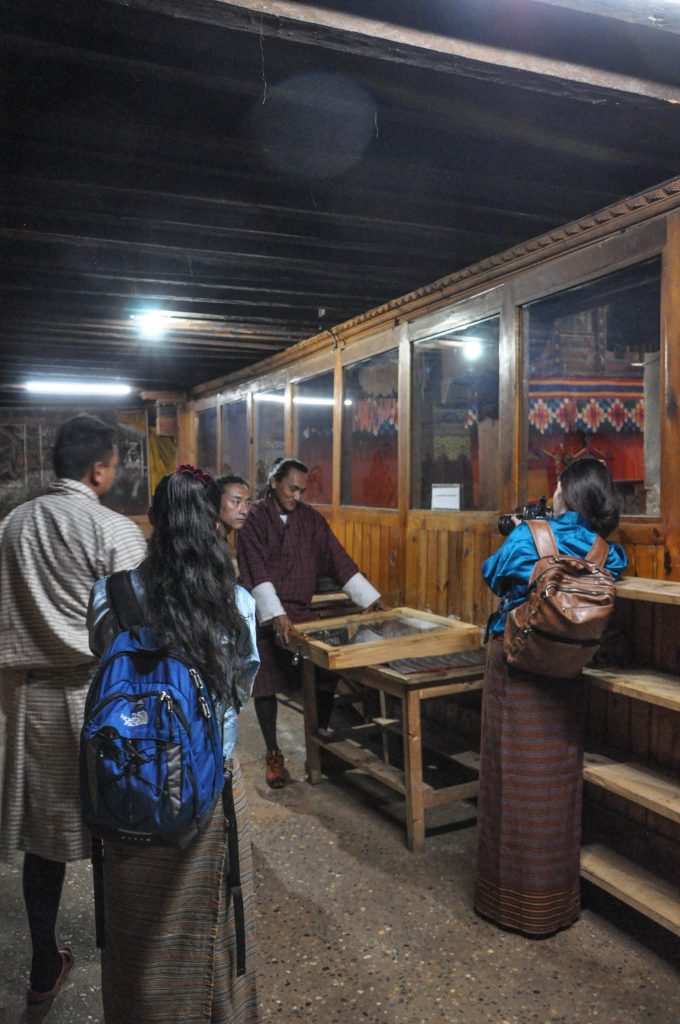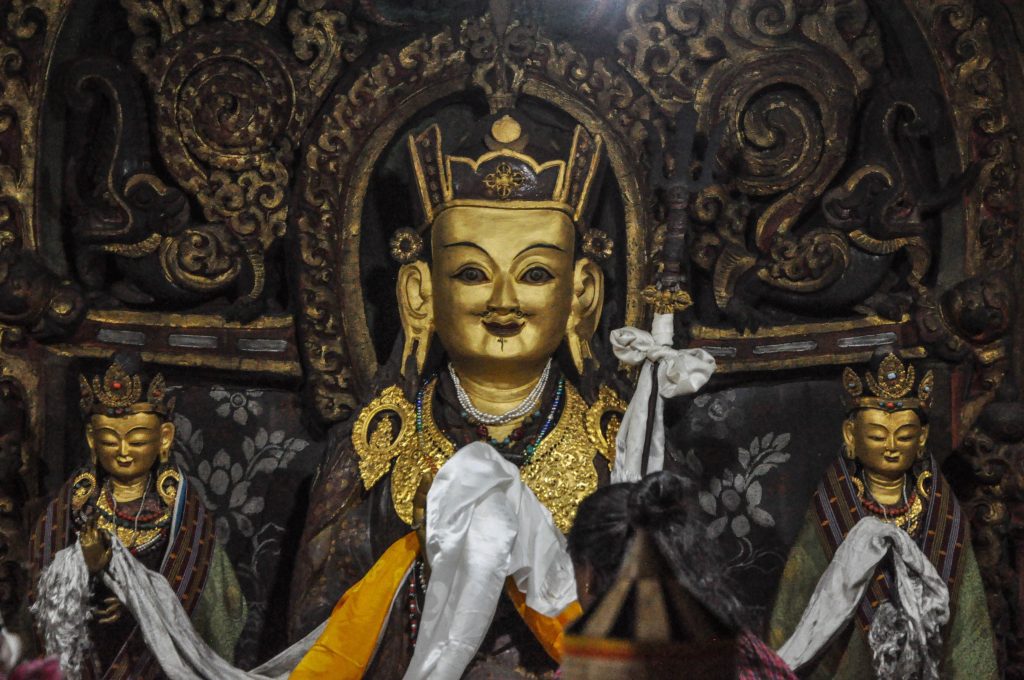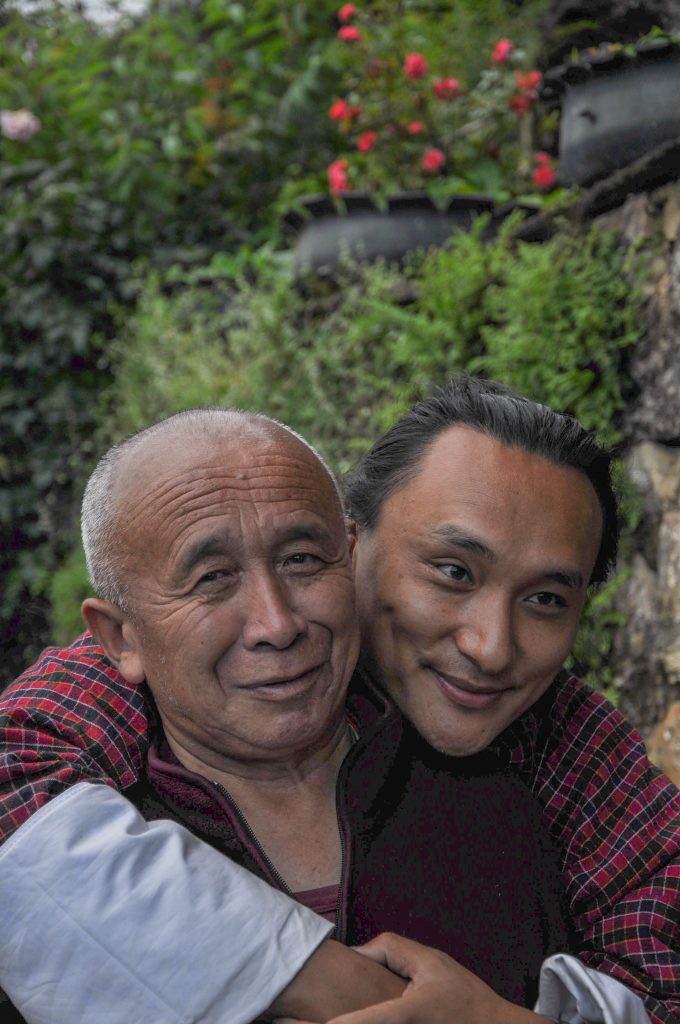
In 2020, I joined an unconventional group of pilgrims in Bumthang for a tour to learn about Terton Pema Lingpa. This group was led by none other than Pawo Choyning Dorji. Before this journey, the Terton was just a chapter in a less than memorable history lesson in school. Little did I realize that class was just a doorway to fascinating tales of prophecies, mystical characters, hidden termas, and a birth of a cultural icon that would shape my country’s ancient identity.

Tamzhing Monastery, Bumthang
What is the significance of Tamzhing Monastery in Bumthang? If you delve into the life of Pema Lingpa, you’ll begin, ironically, from the place of his death, Tamzhing. But the temple of Tamzhing, which was built in 1501, isn’t just a place where Pema Lingpa spent his last years. Since his birth Pema Lingpa spent his time in Tang valley, where he became a Terton and discovered the treasures in Mebar Tsho (The Burning Lake).
As he grew in reputation, the Governor of Chhokhor (part of the current Bumthang town) is said to have invited Pema Lingpa to choose a place in the valley and establish his seat here. Pema Lingpa then selected a spot that faced Kurje and Jambay lhakhang, which also had spacious glades for his horses and cows to graze on. And so Tamzhing was built in 1501, the place where the Pema Lingpa lineage was centered around, and thus became the main seat of Pema Lingpa.
Growing up, the only thing I knew about this temple was that it housed an iron armor made by Pema Lingpa, that visitors could wear and circumambulate the main temple. I remember Apa telling me that sinners will find the armor too heavy and will not be able to complete the kora. Somehow that terrified me as a little girl.
I asked Pawo if Tamzhing had any other fascinating objects besides the iron armor. “That’s the other interesting thing about Pema Lingpa. He grew up as a blacksmith. That was an occupation that people looked down upon at that time. Pema Lingpa has left so many of his creations around in Bhutan. So here we have the armor that people carry around. But the most amazing piece here is the Guru Rinpochhe statue.” The Guru Rinpoche statue in the main lhakhang is believed to be the oldest Guru Rinpochhe statue in the world as most of the statues in Tibet were destroyed. “The statue is very special because it was built by Pema Lingpa himself.” Wait till you hear the fascinating tale behind the statue’s creation.

The Guru Statue that Khandromas Built
The Guru Rinpochhe statue in the main lhakhang is believed to be one of the oldest statues in the world as most of the statues in Tibet were destroyed. “The statue is very special because it was built by Pema Lingpa himself. ”Here’s an interesting tale of how this statue was created. It is believed that as Pema Lingpa turned in for the night before completing the statue, Dakinis flew down and finished building the statue for him. But as the sun rose, the Dakinis flew away leaving the statue without a hat. So Pema Lingpa is said to have made the hat but turned out to be small for the statue’s head.
Pema Lingpa is known to have been short and small in stature. So it is believed that he made the hat based on the size of his head. If you look at Guru’s statue, you’ll know why Guru Rinpochhe’s hat is a bit small for his head. If you look carefully at the statue, you’ll notice that Guru Rinpochhe is gazing upwards. It is believed that as the Dakinis flew away, the statue suddenly moved its gaze upwards towards the sky. Interesting, no?
Padmasambhava Lhakhang
For our second visit, we traveled a few minutes above Tamzhing to a beautiful temple perched on a hill. This lhakhang also overlook the beautiful summer glades of Bumthang. This temple is known as Padmasambhava Lhakhang. The main temple to said to have been renovated by Pema Lingpa around the cave where Guru Rinpochhe meditated. You can still see the Guru Rinpoche’s imprints on the rock. But we’re not just here to visit this sacred temple. We came to meet a lama who plays an important part in the telling of Pema Lingpa’s story.

Meet Lama Tsheten. The 69 year old Lama is the oldest living master of the Pema Lingpa lineage. It is believed that Lama Tsheten was recognized to be a Pema Lingpa Trulku by the previous Khyentse Rinpochhe. He was a little boy at the Lhalung monastery in Tibet. But Lama Tsheten arrived at Tamzhing when he was 8 years old. Since then, he has dedicated his life to spreading the teachings of Pema Lingpa.
(Read more about the Baribrang Project series on yeegetaway.com)